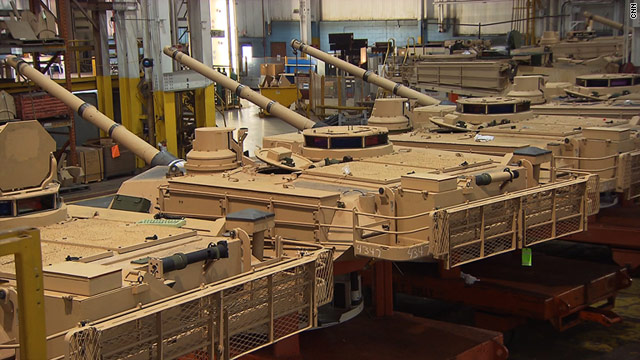As the United States' military budget shrinks ever more, senior military leaders must consider what programs in the military must be either cut or reduced in size in order to meet the budget provided by congress. As part of the effort to trim the fat from their budget the Army decided to reduce the number of M1 Abrams refurbishments per year. The main plant for M1 Abrams production is located in Lima, OH. At the peak of its production in
2009 the Lima plant was refurbishing an average of 2.5 tanks per day. In order to enable this increase in production from their production levels in 2001 the General Dynamics poured 15.5 million dollars into improvements in the assembly line machinery. The company grew from 500 some employees in 2005 to around 1500 in 2009. But due to the Army's cutbacks in production they have been forced to draw back down to the 2005 workforce. This is not just in size, but the actual people from the 2004 workforce as union rules stated that layoffs would happen by least seniority.
 |
| Tank turrets ready ready for reassembly with the tank body in Lima, OH. Picture provided by CNN, http://www.cnn.com/2011/POLITICS/04/29/boehner.ohio.plant.closing/ | | |
|
|
The issue that this situation creates is one of potential generation problems in the future. While the next major kinetic war may be a decade away this draw down has major affects on our ability to wage such a war. This draw back is undoubtedly fiscally sound as we now have to youngest average vehicle age since the inception of the M1 Abrams thus justify the reduction in production. But, the severe drop in employees at the Lima plant means that in a decade we will likely loose many of those extremely experienced workers. This will mean that the new workforce at that time will not have the experience needed to rapidly and effectively increase production output. Because of the union rules we are going to loose production power in the long run which in turn limits our military power internationally.
If we accept that the military industrial complex is now integral part of our fighting force it follows that their diminished production ability directly affects our war fighting ability. The mantra of today's army is not unlike what it was in the mid 90s. We are going to be a smaller and more flexible army. If we as a fighting force must be flexible so too must our industrial force. Both must be able to rapidly and effectively respond to any global situation. These workforce cutbacks do not meet that requirement.

I dont think we're losing too much military power here because we still have over 2000 tanks in reserve sitting in a parking lot. by the time we use those all up in a war that would require them all, we could probably get the plants production back up if necessary. http://security.blogs.cnn.com/2012/10/09/army-to-congress-thanks-but-no-tanks/comment-page-2/
ReplyDeleteMy brother suggested I might like this website. He was totally right. This post actually made my day. You cann't imagine simply how much time I had spent for this info! Thanks! shipping container dimensions
ReplyDeleteGreat post! Your insights remind me of the strategic planning involved in purchasing shipping containers—efficient and forward-thinking. Keep up the good work!
ReplyDelete